Mastering Guest Posting for SEO Success
*If you want to climb up to the top of the Google Search, acquiring high-quality links is a foolproof way to accelerate your progress. While there are numerous praised link-building techniques out there, both white and black hat, there is one in particular which brings you more than just a boost in your SEO performance: guest posting.*

In the last 8 months, we’ve researched blogs, pitched topics, wrote articles, got them published, and promoted on more than one hundred high DA blogs.
Writing articles for other blogs establishes your reputation as an expert in the industry, drives traffic to your website, increases your brand’s awareness, and well… brings you a precious backlink, meaning you’ve just earned one more of Google’s trust credits.
By now, you should’ve realized that guest posting can be a real game-changer for your SEO performance, but truth be told: creating and perfecting our own outreach process has been a really bumpy ride. Even now, after 8 challenging months and 150+ published guests posts, we still have our bad days. Lucky for us, the time has come when we feel that we finally cracked the code and built a foolproof system that runs smoothly and hits our KPIs week in and week out.
Want to learn how we did it? Let’s dive in!
Step 1: Begin with the Goal in Mind
To be efficient, we knew that we needed to have a system in place. And so do you. As they say — what can be measured, can be managed. Every great system starts with a single foundation: plan.
So before the start of your guest post hunting quest, you should clearly define your WHY, HOW, and WHAT.
Why Do You Want to Start Guest Posting?
Identify what is your primary goal — new links, increased brand awareness, or perhaps building your personal brand as an expert in the industry? Choose what matters most for you and your business and keep it in mind while you are setting up your strategy.
Our goals were to improve search visibility, build connections with the bloggers, and spread the word about Nightwatch.
How Are You Going to Make It Happen?
Brainstorm and research ideas on best ways to approach this strategically. Set up a plan — from the moment you research the blog, through contacting the author, to writing your piece, getting it published, and promoting it. We will guide you through this process in details.
What Indicates Success or Failure?
Define your KPIs, track your progress and adjust if needed. Our team identified KPIs based on two things: the number of pitches sent and the number of approvals.
We used Google Sheet to track our progress building a system where each of our three team members had their own task — researching blogs, drafting pitches, writing and delivering the articles. Keeping your hand on the pulse and adapting to changes is a must if you want to keep the process smooth and effective.


How We Built a Foolproof Blogger Outreach Strategy
Step 2: Research Blogs That Accept Guest Posts
How exactly do you find blogs you can write for? You surely can’t rely solely on the most mainstream methods to do it, which usually comes down to googling “<your niche> guest post opportunity” or submitting your pieces to the free submission websites.
So, if your business belongs to the marketing-related niche, we have a few good suggestions that you probably never thought of: Twitter.
If you raised your eyebrows in surprise — yep, Twitter can be a real deal for finding relevant, high-quality blogs for every niche. There are several ways to approach this.
We use two techniques for digging interesting blogs in the SEO and marketing industry:
Twitter Lists and Followers
This is probably the most underrated way of finding blogs, and one of the best ones. It helped us discover 300+ new potential blogs we could write for. It’s simple: research the Twitter lists relevant to your niche — in our case, it was everything SEO and digital marketing related, and look up the users who belong there.
On our Twitter lists, we found micro-influencers and marketing agencies running blogs that we wouldn’t otherwise discover. So we started digging deeper and expanding our list of potential blogs to write for. We also looked up our followers and deducted from their Twitter bios whether they might potentially running blogs relevant to the content we wanted to share. In most of the cases they did.
Twitter Search Box
This method can be used in numerous ways, and the one we experimented with was simple — in the Twitter search box, we typed variations of: “looking for a guest post,” “looking for a guest post blogger,” and so on.
It might be time-consuming, especially because some of the tweets will not match your objective at all. But if you are looking for blogs that don’t belong to the mainstream (and often paid) “Blogs Accepting Guest Posts” lists — that’s your chance.
Zest.is
This is probably one of the coolest places to hang out if you are a marketer who values quality. Zest.is a platform where you can promote your marketing-related articles, as well as read blog posts suggested by other members. It’s a real content distribution mecca.
It’s also an excellent source to browse through and discover new websites you could write a guest post for. It allows you to sort through the topics and narrow your field, whether you are looking solely for the SEO blogs or those related to branding or eCommerce.
The platform is free, extremely easy to navigate, and unbelievably fast-growing. We assure that you will find fresh pieces of great content on a daily basis. Zest.is helped us add ~70 new blogs to our outreach list in the last three months only.
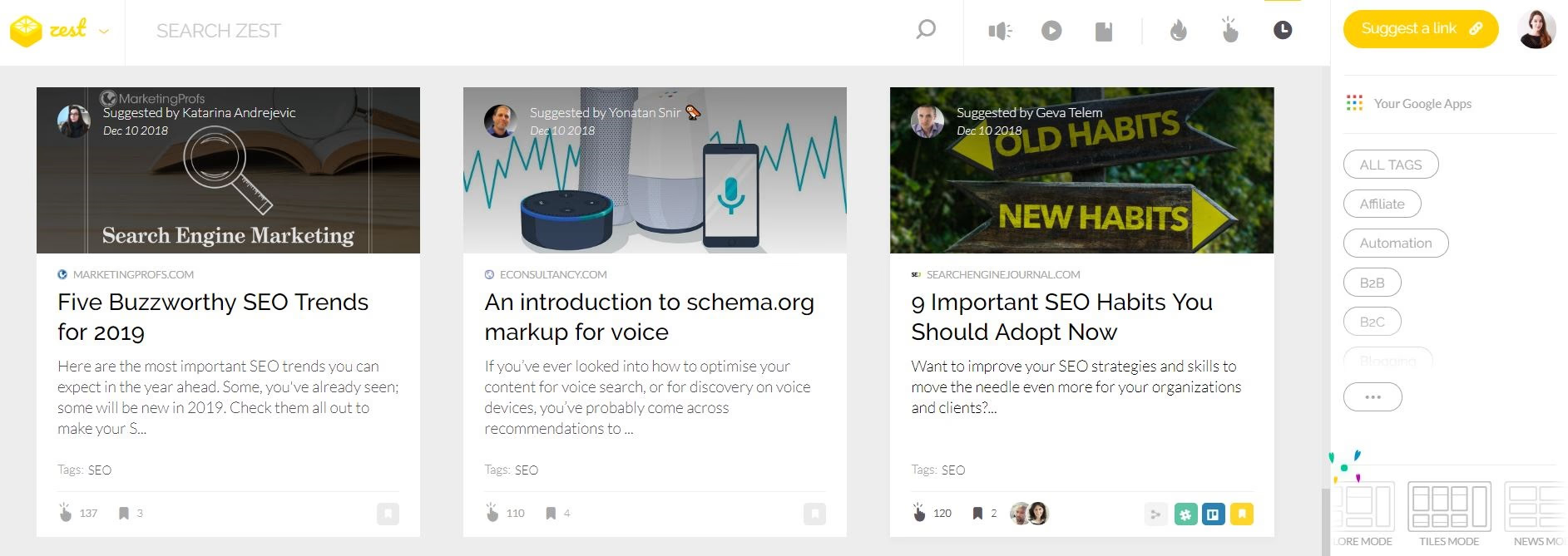

And here are a few alternatives you might want to explore: Refind, Readory, BizSugar. Use them to find new opportunities and let us know how it went!
Facebook Groups
You’re probably already using Facebook groups to promote your content, so why not also explore the opportunity to find blogs you can write for.
There are a few ways you can do it: joining the “guest post exchange” or “bloggers boost groups” and asking about it, or simply browsing through your niche-related groups and looking up the blog posts promoted by its members. Easy, right?
Slack Communities
We’ve mentioned before that we like to use certain Slack communities in our articles distribution strategy. The reason for it is apparent: the communities consist of the relevant audience (in our case — SEO pros and marketers) who are genuinely interested in valuable content. And since we are not the only ones promoting our content there — it’s easy enough to find new blogs looking for exceptional authors.
Depending on the structure of the community, you might encounter the “promotional” channels or simply “guest post” channels where you can directly interact with people who are interested. Ready to try?
Here are three communities we regularly check to hunt for new guest post opportunities:
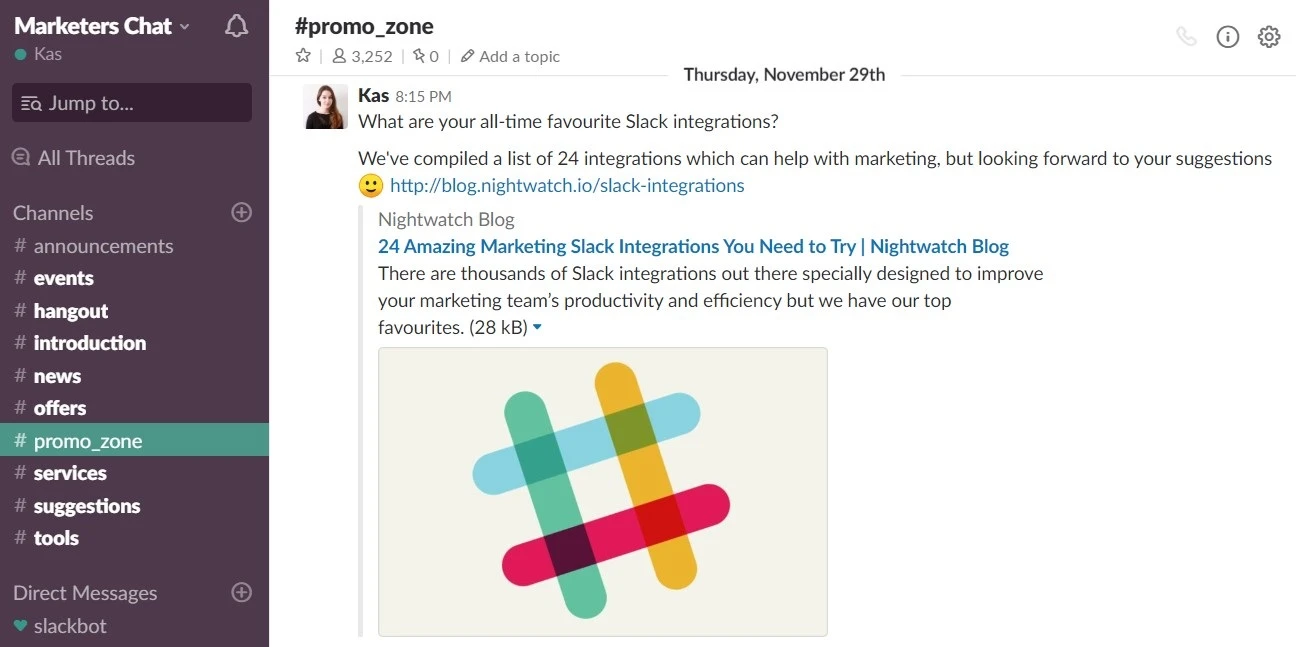

Jobs Advertising Websites
Ok, this is the method that we stumbled upon by accident, and it turned out to be a great little add-on to our existing strategy. It also requires a bit more effort in manually checking if we found the right blog for our next article.
The idea is simple — some jobs advertised on those websites come from the companies running their own blogs (especially marketing agencies). We all know that content marketing helps to educate customers and increases visibility. The blogs you will discover will usually be little known and quite happy to let you write for them. And this can help you become the pioneering guest author on their blogs.
The downside? Some of the companies are rather small, hence their DA might not live up to your standards, which brings us to…
Lists of Blogs Accepting Guest Posts
This is a real shortcut and at times an expensive one. If you Google “blogs accepting guest posts,” you will find numerous lists of blogs which gathered the most popular websites accepting guest posts.
Yes — we did use this method in the past when we were starting, but it proved to be less effective than expected.
The blogs listed there are usually well-known, high DA sites, which can be problematic for at least two reasons: ridiculously high price for publishing the article and a long wait time. It’s not a bad idea to write for a few of them and get Google to trust you more, but with time, we found better ways to approach it.
But We Got You Covered: Here is a List of High DA Blogs That Accept Free Guest Post Submissions. Add Your Own Blog in the List, Copy, Download, or Share!
Step 3: Find the Blog Editor’s Email Address
Now that you researched and listed the blogs you want to write for, it’s time to get in touch and pitch them your ideas.
What might seem like a real struggle is finding the contact details of the relevant people we should reach out. Luckily for us, we have found a perfect free tool to help us find the email address we need — Voila Norbert.
It’s a huge time saver in the outreach process. With Voila Norbert, you can find the email address of your go-to person within seconds (and we all know how crucial it is to reach out to the relevant people). Nobody wants to end up in spam, right?
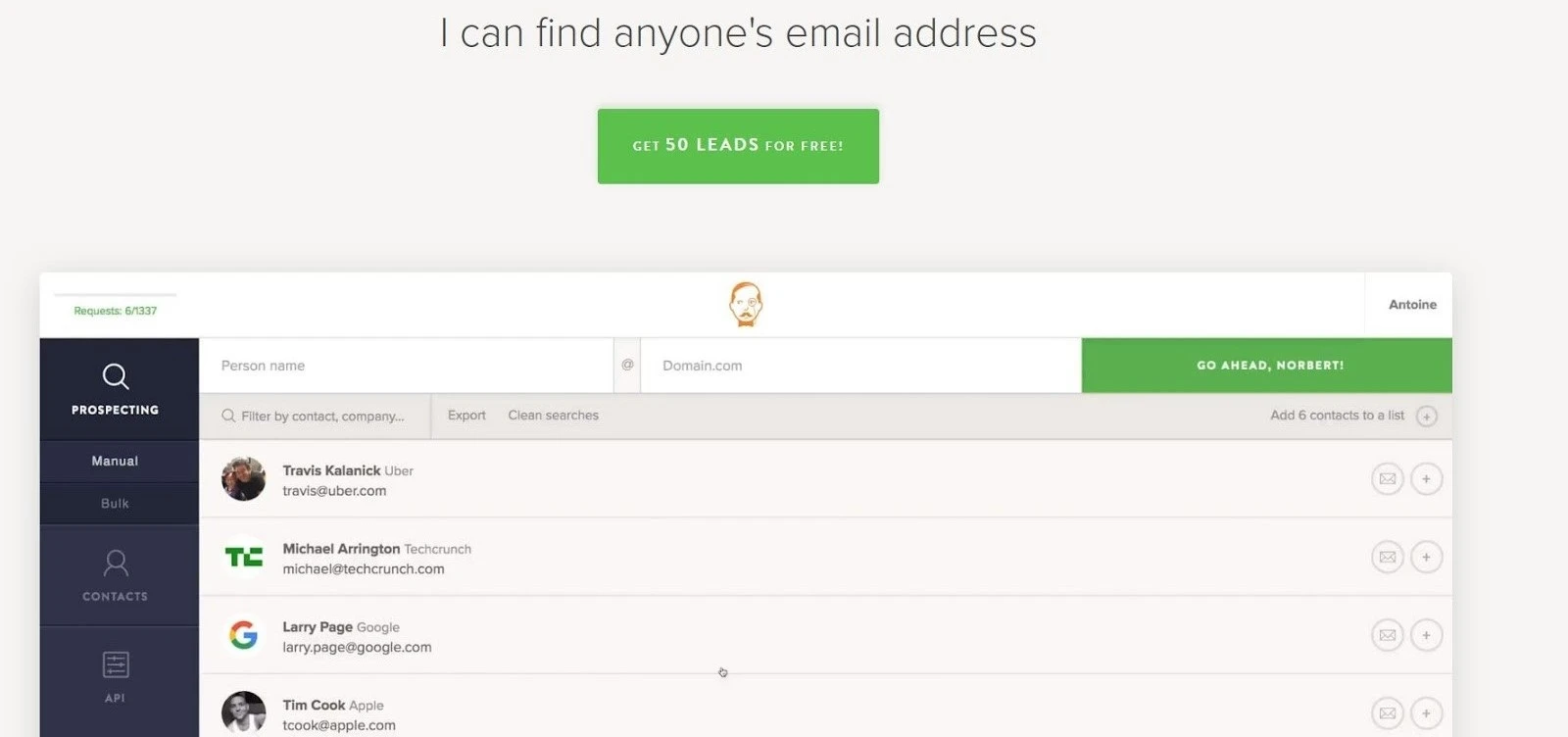

The alternative tool for Voila Norbert that we highly use too is Hunter.io. The website also helps you find relevant email addresses and allows you to do it for free, up to 100 leads. Seems good enough for your first guest blogs building quest, right?
Once you’ve refined your contact list, you can use an email list cleaning solution to ensure your pitches are sent only to active, verified addresses.
Step 4: Pitch Your Guest Article Topics
Crafting a perfect pitch is a painful process and barely ever ends up being successful. Don’t do it. Instead — experiment, test, and measure, like we did.
When it comes to blogger outreach, everyone makes mistakes, and your journey will most likely not be different. No replies and emails of rejection used to be our bread and butter, and it taught us one thing: persistence is the key.
Your email should be short, to the point and, grabbing the attention of your recipient, highlighting the value you are offering and leaving him desperately wanting to feature you as the guest author.
Make sure to include previous publications you are proud of and ask for the audience’s preferences before you suggest your topics. And for god’s sake, don’t write random articles hoping that this is what the editors are looking — do your research first and agree with them on what you are going to draft.
Lastly, don’t forget to stay organized throughout the process and keep track of the blogs you have already contacted. We used Excel sheets to help us monitor our progress and keep the flow smooth.
Step 5: Prepare Your Article
Once you agreed on the article topic with a blog’s editor, you can go ahead and start the process of preparing the article.
It’s essential you keep the list of your pending drafts organized, and here are the things that we do:
- First, we tag the email thread so that it goes to a special folder that we called “Pending drafts.” We meticulously separate emails with tags to keep the mailbox organized and neat.
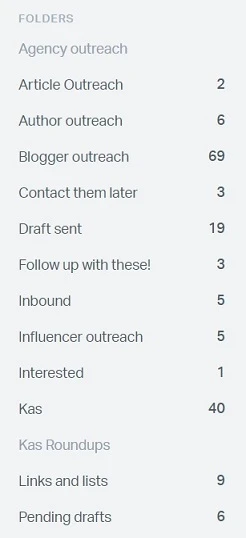

- We add the article to our list that we keep in Google Sheets. You can create your own or use any project management tool, e.g. Airtable.
> Here’s an Easier Way: You Can Copy Our Content Calendar Template and Adjust It to Your Needs. We Use a System of Color-Coded Statuses: “To Be Assigned,” “In Progress,” “Live,” and So On.

- You can add all kinds of notes depending on what works for you. For example, we always make sure to highlight the urgent articles so that they don’t get the attention they need. We also use a different color code for each team member – we found it’s visually more comprehensive than having a special column for a writer. But again, we’re a small team, so having a writer column would help if you have more than five of them.
Alright! Once you tracked your article down, which means you made sure 1) it’s in the queue, and 2) it won’t be lost, you can start on the next step, which is…
Actually Write a Guest Post
Before you start writing, make sure you check a blog’s guidelines on word count, screenshots, their backlink policy, etc. – especially their link policy! You want to get a permanent do-follow link, but keep in mind most of the blogs won’t allow you to place a link to your site or business in the article itself. Your only shot is your bio, so create an engaging one with a working CTA.
What other links should you include in your article?
- A couple of links to the blog’s recent articles
- A couple of links to your own articles, if relevant
- Trusted sources to back up statistics and news
- Good quality resources to elaborate on the topic or a concept
Once the article’s ready, we create a Google Doc on our Google Drive and share the link with the blog editor, unless they want it submitted via a form on their website or CMS.
And for the love of God, do proofread your piece before submitting it! You can write a super-useful, actionable piece, but according to our own blog editor, a good bunch of articles are turned down because of the lousy grammar, punctuation, and style. Have someone else to look at it, or at least use Grammarly or Ginger.
Follow Up with a Blog Editor
After we send the article, we tag it “Draft sent” so that it goes to a designated folder in our mailbox. We also change its status in our outreach sheet to consider it sent.
Unfortunately, most of the time blog editors require a follow-up (or three) to enlighten you on the status of your article. In your follow-up, be confident but not pushy; be nice but not begging. Be specific: ask about the status, feedback, and/or a scheduled publication date rather than just “Hey, any news?”
It won’t be extra to paste the Google Doc link one more time so that the editor wouldn’t have to try and locate your draft somewhere in the ocean of submissions in his or her inbox.
Here’s how your follow-up could look like:
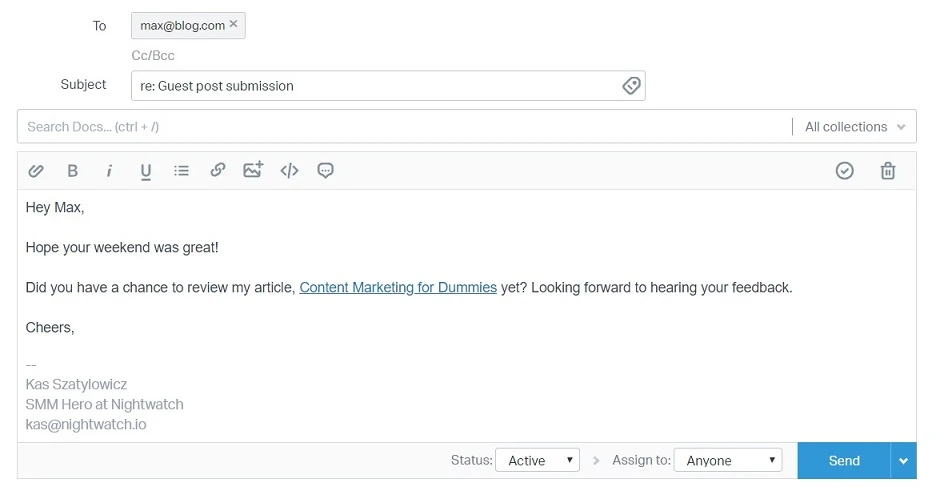
Get Your Article Published
Two of the main things we’ve learned while doing outreach for one year and a half are 1) exercise your patience, and 2) there are and will be things you have no control of. For example, a blog’s schedule: your article might be scheduled to publish tomorrow or 6 months from now. You cannot expect immediate results; this is not what blogger outreach is about.
Once you get it going and keep yourself organized and your workflow steady, you’ll start getting those article published.
Here are a few things we do upon publication – and you should too:
- Change the article status to “Published” in your sheet to track it
- Tag it “Published” in your email so that it goes to its final destination: a folder of published articles
- Let the rest of the team know
- Schedule the article promotion on your social media and/or newsletter so that it gets the exposure it deserves — more about it in the section below
- Get back to the blog editor: thank them for their work and let them in on the promotion details
Step 6: Promote Your Article
Once your article is approved, written, edited, and published, it’s time to tell the world about it. Your content marketing strategy should include a detailed plan on the content promotion and luckily for you — we’ve written a piece on creating an effective content distribution strategy. And pssst… most of the places we mentioned above can serve as both guest post opportunities goldmines and effective content promotion weapons.
Even if your sole goal was to acquire a backlink, you might want to rethink putting effort into the promotion of your masterpiece. Gaining visibility for your published piece of content will bring you more traffic, enhance brand awareness and improve your chances of the article going viral, and what can be wrong with that?
Keeping your initial goals in mind, maximize on the potential and keep the ball rolling. You won’t regret it.
Tip: You can monitor the impact of your backlinks with our Backlink Monitoring Tool.
Final Thoughts
Designing and executing an effective blogger outreach strategy to earn your backlink can be a daunting process if you are blindly following the mainstream advice.
Master the outreach game by following these steps:
- Use alternative ways to research relevant blogs
- Find email address of your go-to person using best tools
- Experiment with the format and content of your pitches
- Test, measure, adjust, and track your performance popup
- Write exceptional content
- Follow up
- Promote your piece using various content distribution strategies.
Useful Resources:
- A list of high DA marketing and SEO blogs that accept free guest post submissions: add your own blog and share
- A content calendar template to copy and customize
- A Google Maps Marketing guide to earning local backlinks
- A guide to improving your backlink profile by finding competitor backlinks to replicate
We made a recap infographic for you to save and share:

And do it over, and over, and over again until you get enough approvals to have to hire someone to help you keep up with the work. Watch your SEO skyrocket, your name being recognized and your mailbox filled with the guest post offers. We wish you all of that!
